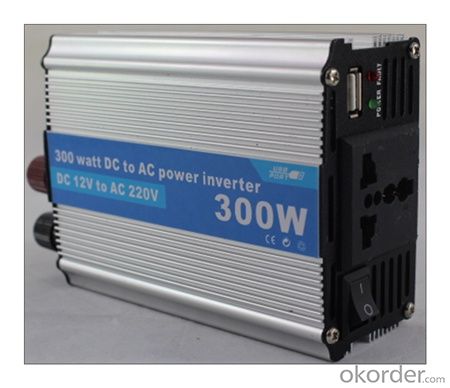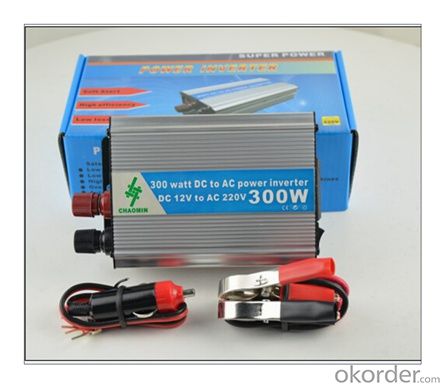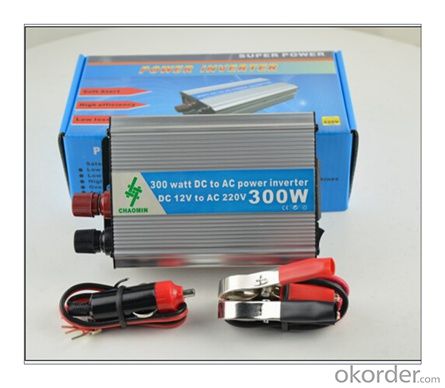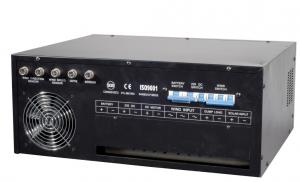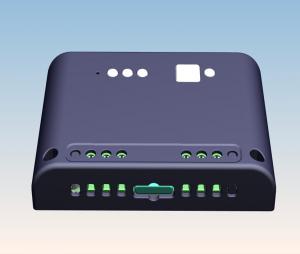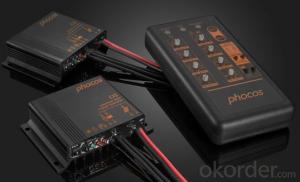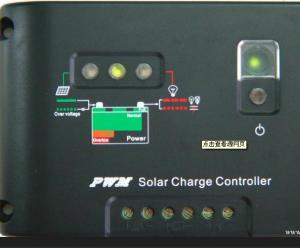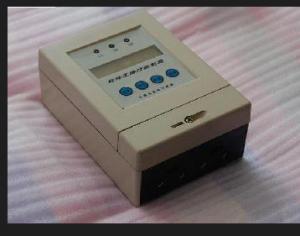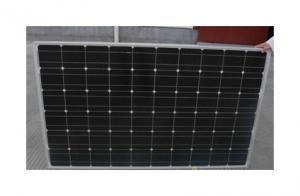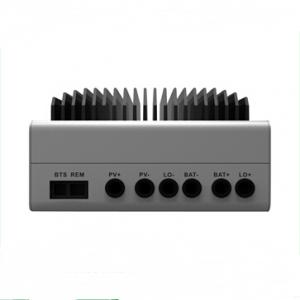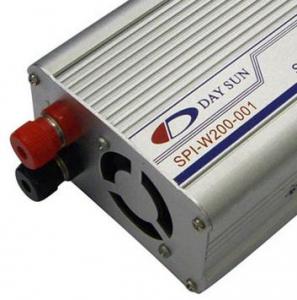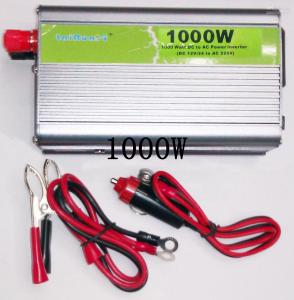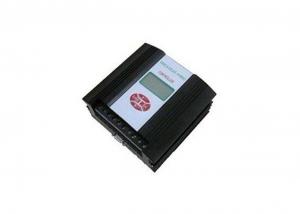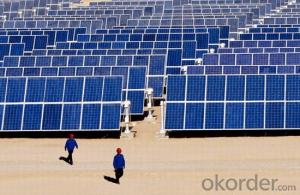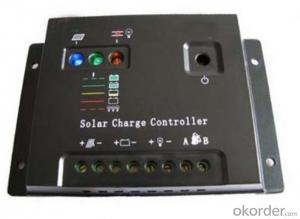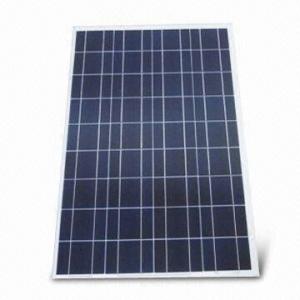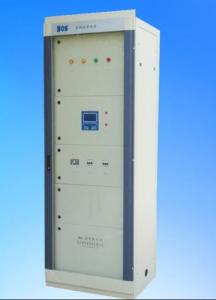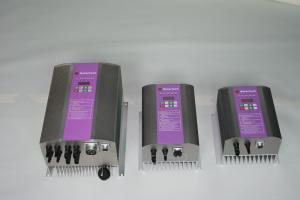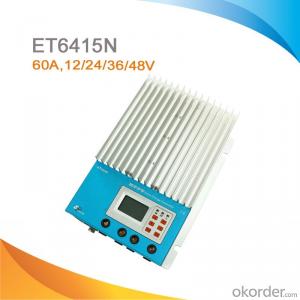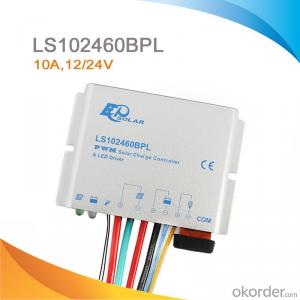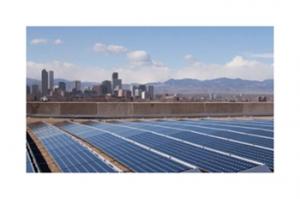Solar Sprinkler Controllers - High Quality Useful 300W Solar Charging Discharging Controller
- Loading Port:
- China main port
- Payment Terms:
- TT or LC
- Min Order Qty:
- 100 unit
- Supply Capability:
- 10000 unit/month
OKorder Service Pledge
OKorder Financial Service
You Might Also Like
1, Product desciption
Inverter circuits designed to produce a variable output voltage range are often used within motor speed controllers.
The DC power for the inverter section can be derived from a normal AC wall outlet or some other source. Control and feedback circuitry is used to adjust the final output of the inverter section which will ultimately determine the speed of the motor operating under its mechanical load.
Motor speed control needs are numerous and include things like: industrial motor driven equipment, electric vehicles, rail transport systems, and power tools. (See related: variable-frequency drive ) Switching states are developed for positive, negative and zero voltages as per the patterns given in the switching Table.
The generated gate pulses are given to each switch in accordance with the developed pattern and thus the output is obtained.
2, Features of the product
Inverters convert low frequency main AC power to higher frequency for use in induction heating.
To do this, AC power is first rectified to provide DC power. The inverter then changes the DC power to high frequency AC power. Due to the reduction in the number of DC Sources employed, the structure becomes more reliable and the output voltage has higher resolution due to an increase in the number of steps so that the reference sinusoidal voltage can be better achieved.
This configuration has recently become very popular in AC power supply and adjustable speed drive applications. This new inverter can avoid extra clamping diodes or voltage balancing capacitors. There are three kinds of level shifted modulation techniques, namely:
The first thing to figure out is the length of road in need of street lights.
This can be a small entrance road only a couple hundred of feet long to miles of streets through an area. Does the area currently have any type of lighting available.
What is the reason for needing street lights in this area
Is the electrical grid already nearby or would you need to call in the power company to bring in electrical lines.
If the electric needs to be brought to the area, how much is this going to cost? Depending on how far the grid electric is from the location of the needed lighting, this can be quite expensive.
How much lighting is needed on the street? Do the lights need to be dark sky compliant.
Do the street lights need to run from dusk to dawn or for only a specified number of hours at night.
Are the street lights able to dim in the middle of the night and still provide enough lighting.
These questions need to be answered before you can decide on how many lights you will need to complete the project.
3, Product Image

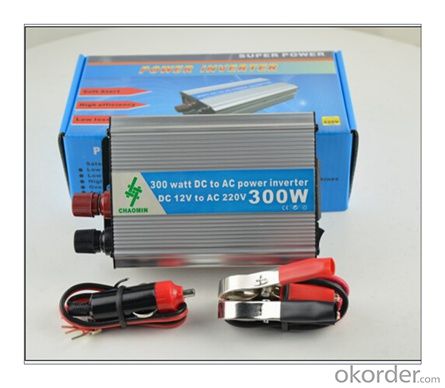
4, Detailed Specification
Specification:
Model | Tracer |
Rated system voltage | 12/24V auto work |
Rated battery current | 40A |
Rated load current | 20A |
Max.battery voltage | 32V |
Max.PV open circuit voltage | 100VDC |
Max.PV input power | 12V 500W, 24V 1000W |
Self-consumption | <10mA(24V) |
Charge Circuit Voltage Drop | ≤0.26V |
Discharge Circuit Voltage Drop | ≤0.15V |
Communication | TTL232 / 8 pin RJ45 |
Temp.compensation | -5mV/℃/2V |
Working temperature | -35℃~+55℃ |
Storage temperature range | -35℃~+80℃ |
Humidity | 10%-90% NC |
Enclosure | IP30 |
Altitude | ≤3000m |
Dimension | 242mm x 169mm x 91mm |
Mounting holes | 180mm x 160mm |
Mounting hole size | Φ5 |
Terminal | 25mm2 |
Weight | 2.05kg |
- Q: What is the maximum output voltage for a solar controller?
- The maximum output voltage for a solar controller typically depends on the specific model and specifications. However, in general, most solar controllers have a maximum output voltage of around 12 to 24 volts, which is suitable for charging batteries or powering low-voltage devices.
- Q: What is a solar controller and what is its purpose?
- A solar controller, or charge controller, is a device used to regulate the flow of electricity between a solar panel and a battery or load. Its purpose is to prevent overcharging of the battery, protect against reverse current flow, and optimize the charging process for maximum efficiency and battery life.
- Q: What is the maximum input current for a solar controller with an LCD display?
- The maximum input current for a solar controller with an LCD display depends on the specific model and manufacturer. It is important to consult the product specifications or user manual to determine the maximum input current rating for a specific solar controller with an LCD display.
- Q: How to adjust the solar controller
- The controller through the computer chip on the battery terminal voltage, discharge current, ambient temperature and other parameters related to the battery capacity of the sample, through the special control model calculation, to achieve the characteristics of the battery discharge rate, temperature compensation correction of high efficiency, high accuracy rate control , And adopted a high efficiency PWM battery charging mode, to ensure that the battery work in the best condition, greatly extending the battery life. With a variety of work patterns, output mode selection, to meet the various needs of users.
- Q: What is the role of a display screen in a solar controller?
- The role of a display screen in a solar controller is to provide real-time information and control options to the user. It allows them to monitor and adjust settings such as battery voltage, charging status, load usage, and other parameters related to the solar power system. The display screen also helps in troubleshooting and diagnosing any issues that may arise, ensuring efficient and effective utilization of solar energy.
- Q: What is the maximum charging current that a solar controller can provide?
- The maximum charging current that a solar controller can provide depends on the specific model and its capabilities. However, most commonly used solar controllers have a maximum charging current range of around 10 to 60 amps.
- Q: Can a solar controller be used in extreme weather conditions (high winds, heavy rain, etc.)?
- Yes, solar controllers are designed to withstand extreme weather conditions such as high winds and heavy rain. They are typically built with sturdy and waterproof materials to ensure durability and protection from outdoor elements. However, it is always recommended to check the specific specifications and guidelines provided by the manufacturer to ensure proper functioning and longevity of the solar controller in such conditions.
- Q: Can a solar controller be used with solar panels of different colors?
- Yes, a solar controller can be used with solar panels of different colors. The color of the solar panels does not affect the functionality of the solar controller, as it is designed to regulate the voltage and charge the batteries connected to the solar system, regardless of the color of the panels.
- Q: What is the maximum voltage drop allowed between the solar panels and the load?
- The maximum voltage drop allowed between the solar panels and the load depends on the specific application and equipment being used. It is typically recommended to keep the voltage drop below 3% for optimal performance and efficiency.
- Q: Are there any energy-saving features in a solar controller?
- Yes, solar controllers typically incorporate various energy-saving features. One prominent feature is the ability to regulate and optimize the charging of batteries connected to the solar system. This ensures that the batteries are charged efficiently, preventing overcharging and extending their lifespan. Additionally, solar controllers often include a low voltage disconnect (LVD) feature, which automatically disconnects the load from the batteries when their voltage drops below a certain level. This prevents excessive discharge, which can damage the batteries. Some advanced solar controllers also incorporate maximum power point tracking (MPPT) technology, which maximizes the energy harvested from the solar panels by continuously adjusting the voltage and current to match the ideal operating conditions. This feature significantly improves the overall energy efficiency of the solar system.
Send your message to us
Solar Sprinkler Controllers - High Quality Useful 300W Solar Charging Discharging Controller
- Loading Port:
- China main port
- Payment Terms:
- TT or LC
- Min Order Qty:
- 100 unit
- Supply Capability:
- 10000 unit/month
OKorder Service Pledge
OKorder Financial Service
Similar products
Hot products
Hot Searches
Related keywords



